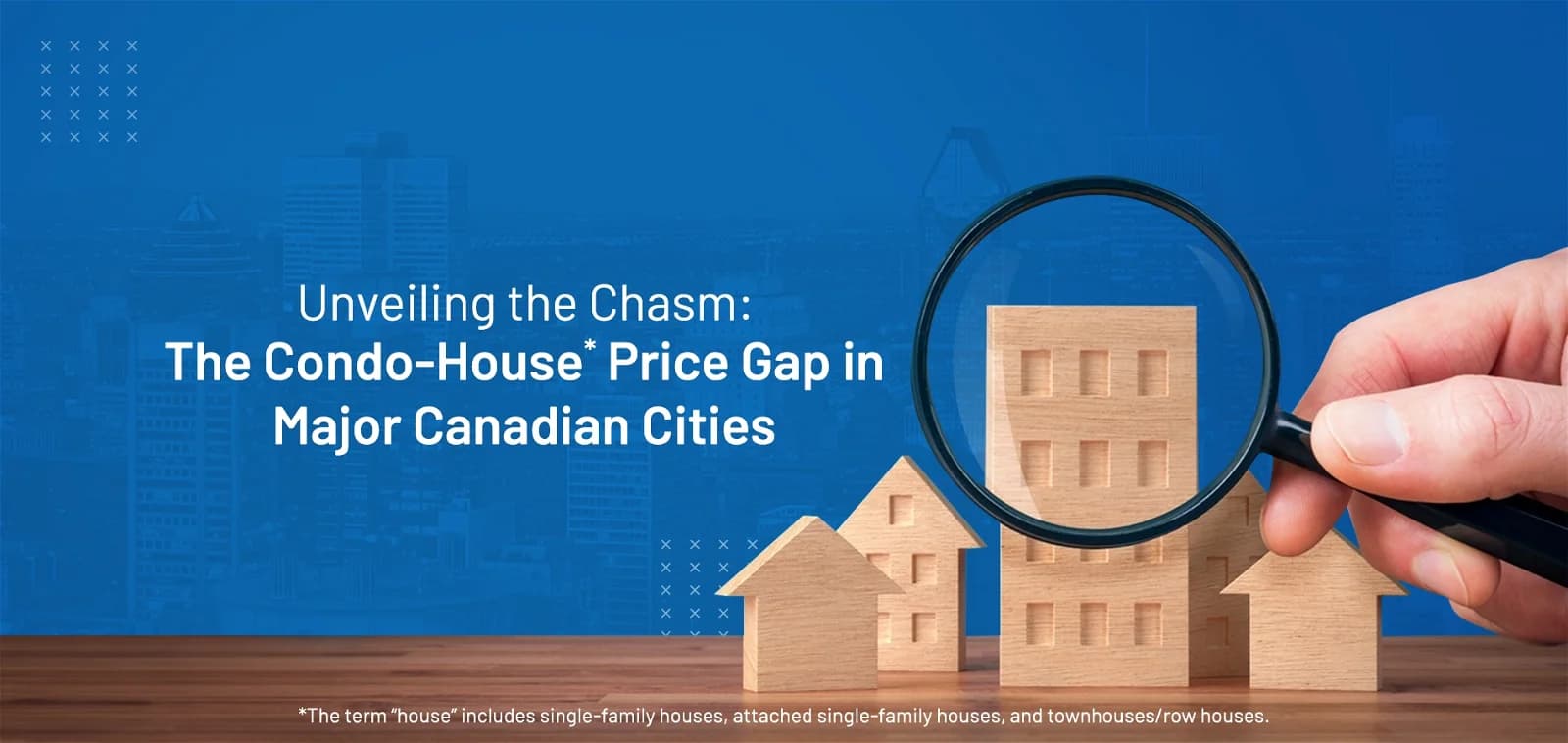Blog Search
Unveiling the Chasm: A New Study Highlights the Condo-House Price Gap in Major Canadian Cities

In the vibrant landscape of Canadian real estate, the dichotomy between condo and single-family home prices in major cities has emerged as a fascinating topic of discussion. Recently, a study has shed light on this intriguing phenomenon, revealing a substantial disparity between the two property types. As the market evolves, it becomes ever more crucial to understand the factors contributing to this gap and its implications for homeowners and investors alike. In this comprehensive blog, we will delve into the intricacies of the study and explore the factors behind this trend.
01Demand and Supply
The Canadian property market has long been a focal point of interest for investors and homeowners, with major cities like Toronto, Vancouver, and Montreal showcasing the most significant discrepancies in condo and house prices. The study conducted by esteemed economists and housing experts has unveiled startling statistics, highlighting that the gap has been steadily widening over the past decade.
02Demand and Supply Dynamics
One of the fundamental factors contributing to the disparity in condo and house prices lies in the demand and supply dynamics of the housing market. As urban centres experience rapid population growth and limited available land for development, the demand for housing has skyrocketed. Condos, with their high-rise structures, cater to the need for compact living spaces in city centres. On the other hand, houses with larger plots of land cater to those seeking more space and privacy in suburban areas.
03Lifestyle Preferences
The contrasting lifestyle preferences of potential homeowners also play a pivotal role in the diverging prices. Young professionals and millennials seeking the convenience of city living often prefer the urban lifestyle that condos offer. The proximity to work, entertainment, and cultural hubs further adds to the allure of condo living. Conversely, families and individuals looking for more space, a backyard, and a quieter environment lean towards houses in suburban or rural locations.
Read More: 5 First-Time Home Buyer Rebates That Will Help Save on Closing Costs
04Amenities and Maintenance Costs
A significant differentiator between condos and houses is the array of amenities offered to residents. Condominiums typically boast an assortment of facilities, such as gyms, swimming pools, and communal spaces, which all residents share. These amenities come at a cost, reflected in the higher price tags of condos. In contrast, houses may not have such shared facilities, and any maintenance or renovations become the sole responsibility of the homeowner.
05Investment Potential
Real estate investment is a considerable driving force behind the price disparity. Investors often view condos as more affordable entry points into the market compared to houses. The ease of property management and the potential for rental income make condos an attractive option for those seeking to diversify their investment portfolios. Additionally, foreign investors are more inclined to invest in condos due to their lower upfront costs and relatively lower barriers to entry.
06Economic Factors and Interest Rates
Macroeconomic factors significantly influence the real estate market, including the gap between condo and house prices. Interest rates play a pivotal role, as low rates encourage borrowing, leading to increased demand for housing. When interest rates are low, potential buyers find it more affordable to take out mortgages, driving up demand for both condos and houses. However, houses, being larger and often more expensive, may experience a more pronounced surge in prices during periods of low-interest rates.
07Regional Disparities
The study also emphasises the importance of considering regional disparities while analysing the condo-house price gap. Different cities and provinces experience varying economic growth, population trends, and local policies that can significantly influence property prices. For instance, the gap in Toronto may differ from that in Vancouver, even though both are major Canadian cities.
08Government Policies and Regulations
Government policies and regulations wield immense power in shaping the real estate landscape. Measures such as foreign ownership restrictions, property taxes, and zoning laws can have a direct impact on condo and house prices. For instance, certain cities may implement measures to encourage the construction of more affordable condos or promote urban densification, thus influencing the pricing trends.

In conclusion, the recent study on the gap between condo and house prices in major Canadian cities brings to light a multifaceted issue that demands attention and understanding. The disparity arises from a combination of factors, including demand and supply dynamics, lifestyle preferences, amenities, investment potential, economic influences, regional disparities, and government policies. As the real estate market continues to evolve, it is essential for prospective buyers, investors, and policymakers to consider these facets and make informed decisions.
Please Note: The term “house” includes single-family houses, attached single-family houses, and townhouses/row houses. The term “condo” refers solely to apartments.Blog Search
Popular Blogs
Popular Blogs
The trademarks MLS®, Multiple Listing Service® and the associated logos identify professional services rendered by REALTOR® members of CREA to effect the purchase, sale and lease of real estate as part of a cooperative selling system.

